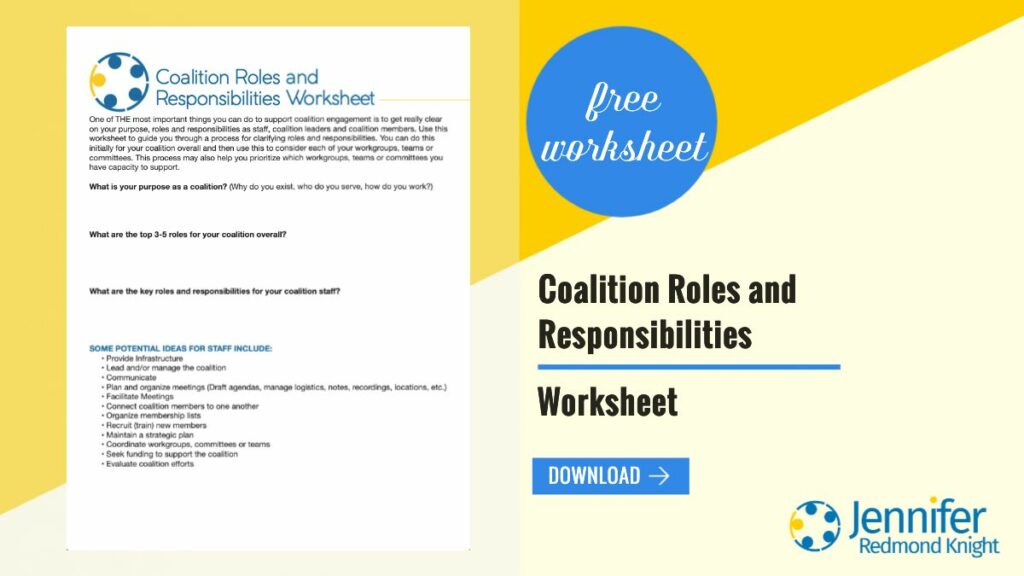In the public health world, the word “coalition” is pretty common. When I try to describe my work to others, I often get confused looks and questions about what I mean by “coalition.” Without realizing it, many of us may be involved in coalitions but we don’t necessarily call them “coalitions.” If you have ever wondered what a coalition is or struggled to define it for someone else, this new blog series is for you! Join me today as I describe three characteristics of a coalition.
A group.
When I describe a coalition, it is a group of people. A coalition is not an individual. The name of the group may differ, but there must be more than one person in the group for it to be a coalition. Some people may call their coalition a “coalition” while others may call it a partnership, network, collaborative, consortium, roundtable, committee, board, workgroup or team.
Working together.
One of the hallmarks of a coalition is that the group of people are willing to work together. This group of people often represent different organizations and have decided that instead of working independently they are interested in working together. One of the reasons that coalitions form is because they realize that they will never be able to accomplish their vision and goals by working independently. While not all work is done together in a coalition, the work of a coalition is focused on the type of work that can only be done by working together. Examples of the type of work that can only be done together are policy and systems change, restructuring environments and influencing what is socially acceptable.
Common goal.
In order for a group to work together, there must be a common goal, cause or mission that inspires the group to gather. This overall common goal must be aligned with the goals of each participant in the group. One of the primary reasons that people join coalitions is because they see how the work of the coalition aligns with their own area of passion, interest and skill. Alternatively, one of the primary reasons that people leave or disengage with coalitions is that the goal of the coalition is not aligned with their own goals. For most public health related coalitions, the coalition members are representatives of organizations that have a common goal to the overall goal of the coalition.
As you reflect on these characteristics of a coalition, what coalitions are you part of right now? What coalitions come to mind?
As you are leading or participating in coalitions, one of the most important (and challenging) aspects is getting clear on roles and responsibilities. Check out my free Coalition Roles and Responsibilities worksheet that you can use to reflect and refine your coalition roles.
One of the first people who taught me the theory and research behind coalitions was Frances Butterfoss, PhD. If you want to learn more about the Coalition Action Theory described by Frances Butterfoss, check out this reference: Butterfoss, F. D., & Kegler, M. C. (2009). The community coalition action theory. In R. J. DiClemente, R. A. Crosby, & M. C. Kegler (Eds.), Emerging theories in health promotion practice and research (2nd ed., pp. 237–276). Jossey-Bass/Wiley.

Photo by Christina @ wocintechchat.com on Unsplash

